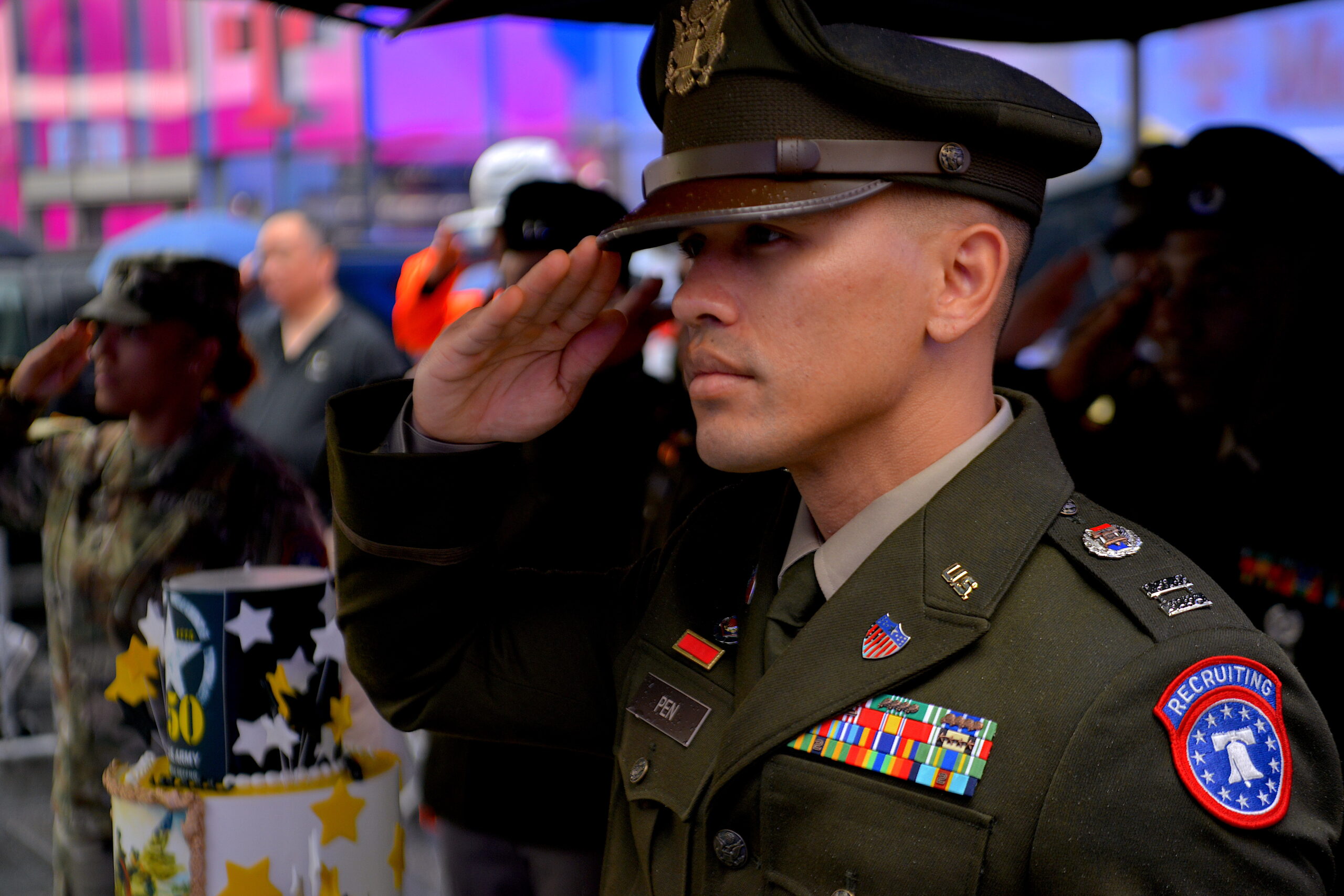- The App
- Sandboxx News
- Resources
Learn
- Company
About
Become a Partner
Support
- The App
- Sandboxx News
- Resources
Learn
- Company
About
Become a Partner
Support

You’ve taken the oath. You’re ready to ship. Now it’s time to learn how to walk the walk—literally.
Marching and military etiquette are two of the first things you’ll learn at Basic Training. They’re not just about how you move or salute—they’re about discipline, professionalism, and pride in wearing the uniform.
Whether you’re days away from shipping or just getting started on your Army journey, here’s a crash course in basic marching and military etiquette to help you start strong.
Marching isn’t just for ceremonies and parades. In the Army, marching teaches:
It’s about moving as one team, one unit. You’ll march to chow, to the range, to training sites—and every step has a purpose.
Here are some marching terms you’ll hear on Day One (and every day after):
Your starting point for everything. Stand tall, heels together, feet at a 45-degree angle, arms straight at your sides, hands curled with thumbs along the seams of your pants. Eyes forward. No movement. No talking.
A relaxed version of attention. You can’t speak, but you can rest one foot outward and clasp your hands behind your back.
This command gets you moving. Step off with your left foot, keeping arms at a natural swing and staying in step with your unit.
Marching in place. You’ll lift your feet and keep cadence while staying in formation.
These are turning commands, directing your entire formation to pivot left or right while maintaining alignment.
A 180-degree turn while marching. Think of it as a military U-turn—quick and sharp.
Stop marching. Your lead foot hits the ground, and you come to a complete stop in two counts.
Pro Tip: Practice marching with a metronome app or military cadence to get used to the rhythm—it’ll help you stay in sync during training.
Military etiquette is more than just rules—it’s a sign of respect for the Army, your leaders, your peers, and yourself.These customs help maintain order, professionalism, and mutual trust.
Here are some basics to know:
Always address Drill Sergeants and leaders with the proper title. Basic Training is not the place for casual language—stick to “Yes, Drill Sergeant,” or “No, Drill Sergeant.”
Removing your cap or helmet when entering a building is a sign of respect. You’ll learn when and where to do this.
When walking with someone senior in rank, always walk to their left, unless otherwise directed.
Stop, face the flag or the music, and stand at attention when the Star-Spangled Banner plays or the flag is raised/lowered. If in uniform, salute.
Marching in step. Saluting with pride. Standing at attention. These small acts represent something far greater than movement or formality—they show your commitment to the Army values: loyalty, duty, respect, selfless service, honor, integrity, and personal courage.You don’t have to be perfect on Day One—but come ready to learn, improve, and embrace the standard.
I’ll be back next week with more tips and guidance. Until then, Hooah!
SGM Kris Broadus, U.S. Army (Retired)